- Nikki Tulley
- PhD Candidate
- Indigenous Food, Energy & Water Security and Sovereignty
- https://energy.arizona.edu/indigefewss
- Indige-FEWSS, University of Arizona
- Sarah Abney
- https://scholar.google.com/citations?user=1tG33hkAAAAJ&hl=en&oi=ao
- PhD Candidate
- Indigenous Food, Energy & Water Security and Sovereignty
- https://energy.arizona.edu/indigefewss
- Indige-FEWSS, University of Arizona
- Torran Anderson
- https://www.linkedin.com/in/torran-anderson-53467562/
- Community Engagement Coordinator
- Indigenous Food, Energy & Water Security and Sovereignty
- https://energy.arizona.edu/indigefewss
- University of Arizona
- Karletta Chief
- https://environmentalscience.cals.arizona.edu/person/karletta-chief
- Associate Professor & Extension Specialist
- Indigenous Food, Energy & Water Security and Sovereignty
- https://energy.arizona.edu/indigefewss
- University of Arizona
- Vasiliki Karanikola
- https://kores.lab.arizona.edu/
- Assistant Professor
- Indigenous Food, Energy & Water Security and Sovereignty
- https://energy.arizona.edu/indigefewss
- University of Arizona
- Jaymus Lee
- https://www.linkedin.com/in/jaymus-lee-10211987/
- MS Candidate
- Indigenous Food, Energy & Water Security and Sovereignty
- https://energy.arizona.edu/indigefewss
- Indige-FEWSS, University of Arizona
Facilitators’
Choice Public
Choice
Choice Public
Choice
Public Discussion
Continue the discussion of this presentation on the Multiplex. Go to Multiplex






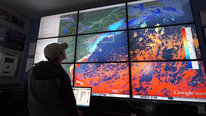
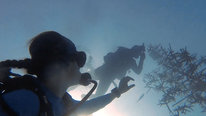
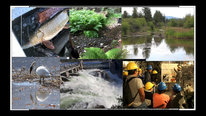
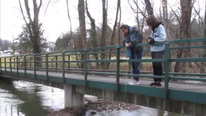

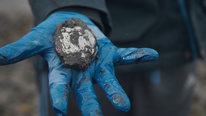
Nikki Tulley
PhD Candidate
Yá'át'ééh (Hello in Navajo), my name is Nikki Tulley, I am a Ph.D. candidate at the University of Arizona (UA) and an Indigenous Food, Energy & Water Security and Sovereignty (Indige-FEWSS) trainee. Ahéhee' (Thank you) for your interest and time to learn about our 2021 STEM for All Video Showcase. Indige-FEWSS aims to develop future generations of scientists and engineers to work in collaboration with Indigenous communities to address the FEWS nexus. In this collaboration, there is a partnership between the community and the UA that allows tribal colleges and universities, community members, leaders, and UA faculty and graduate students to address FEWS challenges with an intercultural awareness mentality. This past year COVID-19 has highlighted the great need to address water challenges in conjunction with other components of the FEWS nexus. This year’s video shows how Indige-FEWSS responded to the great impact of COVID-19 on the Navajo Nation. a supporting collaboration role that was strongly guided by tribal consultation to meet the needs of the people. For more information about Indige-FEWSS please visit our website: https://www.environment.arizona.edu/indigefewss
Patricia Montaño
Torran Anderson
Tonya Wheeler
Long live ALL Native Nations.
Torran Anderson
Nikki Tulley
Karletta Chief
Karletta Chief
Associate Professor & Extension Specialist
We hope that Indige-FEWSS can contribute to off-grid solutions to provide food, energy and water securities. Thank you for visiting our discussion.
Jaymus Lee
MS Candidate
Hello my name is Jaymus Lee and I am a masters student at the University of Arizona and an Indigenous Food, Energy & Water Security and Sovereignty (Indige-FEWSS) trainee. Thank you for taking time to watch our 2021 STEM for All Video Showcase, our team hopes that you enjoyed it. Indige-FEWSS has been very active throughout the pandemic and continues to work with tribal, university, and non-profit organizations to address FEWS issues. The overall research theme for Indige-FEWSS is the development of novel and sustainable solutions for off-grid production of safe drinking water, brine management operations, and controlled environment agriculture systems. This includes research in innovative photovoltaics; holographics; sensors and controls; unit operation technologies; and material, device, and systems resiliency. Specifically, Indige-FEWSS is building upon the following research activities: novel photovoltaic materials & technologies for controlled environment agriculture and management of coupled natural-human systems for production of fit-for-use water from brackish groundwater. Ask us more about how we are putting our research and training into action on the Navajo Nation.
Torran Anderson
Lydia Horne
This project is super cool! I'm curious about how your Indige-FEWSS program came about and how you worked to establish trust between the university and the Indigenous communities you're working with, especially in light of historical and ongoing marginalization of Indigenous peoples by settlers? I think a lot of researchers are interested in building such relationships but struggle to overcome these challenges and historically poor relationships between research institutions and minoritized groups.
Torran Anderson
Nikki Tulley
Nikki Tulley
PhD Candidate
Hi, Lydia thanks for your questions. I’ll leave how the Indige-FEWSS program came about for one of our other presenters to answer. However, I’d like to share a bit more information about the relationship between the university and Indigenous communities. As a researcher working with the Navajo Nation, I have found that this concept of tribal consultation is essential. What tribal consultation means is that we work directly with the tribe in a collaborative manner in which we understand that the tribe is a sovereign entity. In the work I do with the Navajo Nation from start to finish, the tribe is aware of my research. There are meetings with the communities and tribal entities. Their input is key to the long-term sustainability of the information and technologies we are developing with these Indigenous communities. The informative delivery of the status of the research is part of the research process that the Navajo Nation has. Searching to see if the Indigenous community a researcher is interested in working with has its own Institutional Review Board could provide further information on how to move forward in a respectful manner. Much like your efforts with the NGCI inventory, Indige-FEWSS is working to understand better our tribal partners’ challenges and interests regarding the FEWS nexus. Through this collaboration, I’ve seen trust being built with the communities through the consistent interaction over time between the researchers and the community. On a personal level as an Indigenous researcher, I have begun to translate some of my work I am involved with into the Navajo language to help with the building of trust in which I am speaking the language of the Indigenous community.
Cara Shopa
Hi Lydia, I'm Cara the program coordinator for IndigeFEWSS. This is an NSF Research Traineeship program (#DGE1735173) awarded to an interdisciplinary team at UArizona and led by Dr. Karletta Chief (Navajo). The program aims to develop the next generation of scientists and engineers to work with and within Indigenous communities to address food-energy-water challenges. Dr. Chief has been working with Navajo communities and government for many years and the trust she has earned allowed the IndigeFEWSS team to engage in a meaningful way, both in our training program and when COVID-19 created the urgent need for technical contributions. I appreciate that Nikki highlighted the continuous communication with the community, as that is at the core of our mission.
Lydia Horne
Thanks for your response Nikki! I hope to see more programs like yours between Indigenous groups and research institutions that are truly mutually beneficial in the future.
Torran Anderson
Nikki Tulley
Nikki Tulley
PhD Candidate
I feel the same way, Lydia, and completely see more of these programs bringing us to the truly mutually beneficial work for the future you speak of. I really liked how you phrased that; thank you.
Maya Trotz
Wonderful to see the integrated system used to provide fresh food, especially during the pandemic. If one factored in transportation, how far do people travel to get to your produce?
Karletta Chief
Torran Anderson
Nikki Tulley
Jaymus Lee
MS Candidate
Hello Maya thanks for taking time to watch our video and asking such a great question. During this past year and through great collaboration with the UArizona Controlled Environment Agriculture Center, we were able to donate large amounts of produce to the Navajo Nation. Unfortunately our pilot program system is still under construction and we hope to have it completed by the end of this year. The system involves working with Diné College's Land Grant Office (Navajo tribal college) to renovate their Hoop House. The renovation would include more environmental control technology, reinforced structural support, conversion of raised bed gardening to a variety of hydroponic systems, integration of a photovoltaic panel grid, and solar nano-filtration unit. The tribal college will use this system for educating their students and community members, workforce development in modern CEA practices, and research opportunities. As part of Indige-FEWSS, graduate students will be developing training modules for the off-grid system and all its components with continuing support provided to Diné College by the UArizona CEAC faculty and staff. While they may not be providing substantial produce for community use, the off-grid CEA system will encourage and strengthen food sovereignty amongst the community through knowledge and training. In light of the pandemic and its significant impact on the reservation, the Navajo Nation government was very interested in the off-grid system - so watch out for future project development! Short answer, we have not grown any fresh food for local consumption, but hope to empower the community in the future to do so with a more integrated sustainable culturally relevant approach in mind! Thank you for your time.
Nikki Tulley
PhD Candidate
Hi Maya, to give you an estimation of what some residents on the Navajo Nation may travel now for groceries and produce. I know of people in my home community on the reservation that will travel over a hundred miles for an estimated two-hour drive to get groceries that would also include some produce. Within the boundaries of the Navajo Nation, there are 13 grocery stores. Taking into consideration the information Jaymus shared with you these systems brought into communities would help greatly in distance traveled for some fresh produce options.
Nuria Jaumot-Pascual
Research Scientist
Thank you so much for sharing this amazing work with us. I am impressed and thankful that the project was able to pivot and address the current moment is such an effective way. I hope that the work can continue to address the long-term needs of the Navajo reservation's community through work that supports the Navajo Nation's sovereignty.
I am curious to hear about how the project is evaluating impacts in a manner that is truly responsive to the community and using methods that are rooted in the Navajo culture. If it's possible to share some of those here, I would really enjoy to read about them.
Torran Anderson
Nikki Tulley
Nikki Tulley
PhD Candidate
Great question, Nuria. There are recently two articles that have come out that address some points you have mentioned. The first article is titled Chronic Wicked Water Problems in the Navajo Nation Heightened by the COVID-19 Pandemic, was written as a collaboration with representation from the tribe and members of Indige-FEWSS. This article describes some of the long-term challenges that the Navajo Nation faces concerning water access and water quality. The second article in this issue is titled Addressing Food-Energy-Water Insecurities of the Navajo Nation through University-Community Collaboration. In these articles, you will find a more in-depth explanation of the work happening and the current water challenges on the NN with the acknowledgement of the long-term needs. To your point of evaluating impacts, I’ll allow some of the other co-presenters to share more information. This is the link of where these two articles are shared in the Water Resources IMPACT Magazine https://wrrc.arizona.edu/news/impact-magazine-f...
Nuria Jaumot-Pascual
Stephen Alkins
Diversity, Equity, and Inclusion Officer
Great work, which I hope continues for the long-term establishment of infrastructure. Within the presentation I noticed that there was a focus on collaborations among multiple entities (federal, non-profit, etc.), apart from corporate, for-profit companies. Are there plans to maybe leverage relationships in that sector? If so, what are tribal considerations that may currently exist from this type of arrangement?
Torran Anderson
Karletta Chief
Associate Professor & Extension Specialist
Great question Stephen! Indige-FEWSS does have corporate partners on our advisory board and Coca-Cola does fund our training with tribal students. For the Navajo Nation Water Access Coordination Group, I don't believe they have any partnerships with corporation. Indige-FEWSS has gone through tribal consultation and approval process and has ongoing oversight by the Navajo Nation. I believe corporations can go directly to the Navajo Nation and engage in that process too.
Overtoun Jenda
Assistant Provost and Professor of Mathematics
Am so glad to see folks working hard to make a difference. Are there plans to sustain this initiative beyond the grant period? How can others be involved? Can this be replicated in other Indigenous communities around the country?
Karletta Chief
Torran Anderson
Nikki Tulley
Nikki Tulley
PhD Candidate
Good morning Overtoun; thank you for your feedback and questions. I feel the goal of Indige-FEWSS can answer some of your questions. The goal of Indige-FEWSS is to develop a diverse workforce with intercultural awareness and Food-Energy-Water Security (FEWS) expertise to address FEWS challenges in Indigenous communities. I’m a trainee in this program, and I feel that the training and experience will continue to be prevalent in my work. Through this traineeship, I think that the goal of Indige-FEWSS in addressing the FEWS challenges in Indigenous communities will continue to sustain this initiative on a long-term basis. Indigenous and Non-Indigenous graduate students participate in the Indige-FEWSS traineeship with distinct research interests tailored to their programs. In this tailoring of research and community outreach, the Indige-FEWSS program will reach other Indigenous communities. To your questions of how others can become involved and the question about replicating the program in other Indigenous communities, I’ll let some of the other co-presenters speak to that.
Cara Shopa
Hello Overtoun, in addition to what Nikki and Torran replied, I can tell you the University of Arizona is engaged at the administration and the departmental levels to continue many elements of the IndigeFEWSS training program and community engaged research. The Native American leadership at UArizona and IndigeFEWSS faculty Dr. Karletta Chief and Dr. Valerie Shirley are collaborating to institutionalize trainings on best practices for community participatory research with Indigenous sovereign nations.
Karletta Chief
Associate Professor & Extension Specialist
Dear Overtoun Jenda, Yes, we are continuing to pursue grants to sustain the efforts. We hope that we get awarded so we can continue on!
Torran Anderson
Community Engagement Coordinator
Thank you for your questions, Overtoun Jenda. Yes, we would love to sustain this project beyond when it ends in June 2022. Indige-FEWSS has had a positive impact and we're looking for ways to continue the project. We're also open to any ideas you or your colleagues have on ways to sustain this project. This program could be replicated in other Indigenous communities. We're working with the University of Arizona to connect with other Indigenous communities and projects in Arizona.
One way people can get involved is to participate in our Native Voices in STEM series where Indigenous scientists and experts share their work. You can watch an archive of past presenters here: https://environment.arizona.edu/indigefewss/nvis/library
Nikki Tulley
Karletta Chief
Associate Professor & Extension Specialist
Ya'at'eeh or hello as we say in Navajo! Thank you for coming by to view our video! My name is Karletta Chief and I am an Associate Professor & Extension Specialist in Environmental Science at the University of Arizona. I am also the PI of the NSF NRT Indigenous Food Energy and Water Security and Sovereignty Training Program along with 11 wonderful UArizona faculty and our co-PI Benita Litson who is the director of the Dine' College Land Grant Office. We have 26 trainees and are in the 4th year of our training program. COVID-19 hit tribal communities and created enormous challenges in water, food and energy securities. With the ongoing work of Indige-FEWSS the last several years on piloting off-grid solar powered water and greenhouse technologies. So when the Navajo Nation invited us to work on the pressing COVID-19 challenges, we quickly responded. This video details more of what we did. Thank you so much for dropping by!
Nikki Tulley
Brigitta Rongstad
Beautiful and important video! Has your group thought about developing any informal STEM education programs or have you partnered with any existing programs to get younger students interested in pursuing careers in the food-energy-water sectors or to get them excited about getting involved?
Torran Anderson
Nikki Tulley
Sarah Abney
PhD Candidate
Hey Brigitta - thanks for watching and inquiring further! I am a junior trainee with Indige-FEWSS and for the past 3 summers we have hosted a summer STEM education program for undergraduate students with Dine' college called Tribal Colleges and Universities Programs (TCUP) where trainees facilitate Food-Energy-Water (FEW) learning through teaching modules they make. This year we are holding this event virtually and I am excited to be a part of the 4th cohort to lead this program. While this is a more formal example, we have had trainees who took the modules developed for TCUP to teach high school students on the Navajo Nation. Some members of Indige-FEWSS have given career talks to middle school audiences as well.
Brigitta Rongstad
Nikki Tulley
Itzel Aceves-Azuara
Hi! What a wonderful project! We can learn so much from it for several reasons, including incorporating traditional Indigenous ways of knowing and organizing.
I was curious to know more about some statements made at the end of the video, like when Manuelito talks about the project, allowing him to do research that positively impacts the community. I connect this to our video, in which we explore how learning with purpose is a strength for learning in many Indigenous communities of the Americas. People from communities that emphasize being community-minded often also show strengths in aligning with a group and fluidly collaborating. In your project, I could notice how collaboration a key element for coming with solutions.
Torran Anderson
Torran Anderson
Community Engagement Coordinator
Thank you, Itzel--great point! I enjoyed watching your video as well and was struck by the comment in the video that people feel more motivated when their work address real world issues in their communities. Many of the Indige-FEWSS students are undergoing this training to bring their expertise back to their communities. Part of the Indige-FEWSS program includes experience teaching tribal college students. This has been an amazing partnership and allows trainees to learn from tribal college students and share their research. Best of luck with your program!
Tonya Wheeler
I hope this project wins.
Karletta Chief
Torran Anderson
Karletta Chief
Associate Professor & Extension Specialist
Thank you so much for your support. Please vote by sharing the video on social media or via email.
Raymond Reid
Hello Karletta
Thanks for sending to me the video and messages that accompanied the video. Locations of many homes on the Navajo reservation are in places where no water is piped. People living in these areas have difficulties obtaining drinkable water. Amounts of rain and snow falling on the reservation have become less and less with each passing year. Water collected in small puddles is not drinkable due to contamination by wandering desert animals that also seek water. Despite these hardships with regard to locating good water to drink, many Navajo individuals continue to live in areas where water is scarce. Land is sacred to Navajo tribal members – made sacred by passed close relatives and the animals that provided food for passed relatives. I wish you and all working with you on this project the very best and that your project will be successful now and in the future. My vote is to support you. ----Raymond Reid, MD JHU Ctr for American Indian Health
Torran Anderson
Karletta Chief
Karletta Chief
Associate Professor & Extension Specialist
Thank you for your comment Dr. Reid. Lack of access to water on the Navajo Nation is a long standing challenge that needs innovative solutions. We hope that through our work we can provide creative and innovative off-grid solutions. The water treatment systems aims to remove contaminants from non-potable water sources using solar energy. Please vote by sharing our video via social media or email. Thank you so much for your support!
Raymond Reid
Hello Karletta
Thanks for sending to me the video and messages that accompanied the video. Locations of many homes on the Navajo reservation are in places where no water is piped. People living in these areas have difficulties obtaining drinkable water. Amounts of rain and snow falling on the reservation have become less and less with each passing year. Water collected in small puddles is not drinkable due to contamination by wandering desert animals that also seek water. Despite these hardships with regard to locating good water to drink, many Navajo individuals continue to live in areas where water is scarce. Land is sacred to Navajo tribal members – made sacred by passed close relatives and the animals that provided food for passed relatives. I wish you and all working with you on this project the very best and that your project will be successful now and in the future. My vote is to support you. ----Raymond Reid, MD JHU Ctr for American Indian Health
Torran Anderson
Amanda Manzanares
Engaging and informative video! Thank you for your work, I hope to learn more about your project as it continues and I hope more projects like yours will be developed that encourage people to learn the importance of FEW and working together.
Karletta Chief
Nikki Tulley
Torran Anderson
Torran Anderson
Community Engagement Coordinator
Thank you very much, Amanda! I agree with your enthusiasm for projects that encourage people to learn about FEWS and working together. It's been incredibly rewarding to be part of the Indigenous Food, Energy & Water Security and Sovereignty program. We'll continue to post updates on the Indige-FEWSS project on our website: https://www.environment.arizona.edu/indigefewss